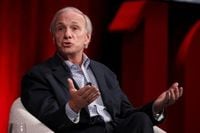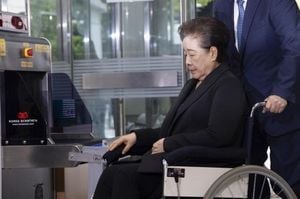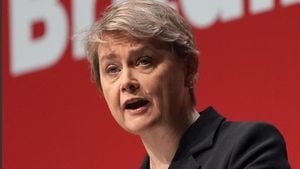Ray Dalio, the billionaire founder of Bridgewater Associates and one of Wall Street’s most respected contrarians, has issued a stark warning about the United States’ mounting government debt and the deepening divisions within its society. In a series of interviews aired on October 10, 2025, Dalio compared the current financial and political environment to the years preceding World War II, drawing attention to the alarming pace at which U.S. government borrowing is rising. "When debt and debt service rise relative to your income, it’s like plaque in the arteries that then begins to squeeze out the spending," Dalio told Bloomberg’s Francine Lacqua, a metaphor he has used repeatedly to emphasize how excessive debt can choke off productive investment and economic growth.
Dalio’s concerns are not limited to economics. He pointed to what he sees as a developing “civil war” within the United States, not in the sense of armed conflict, but as a deepening inability among Americans to reach consensus due to rising wealth gaps and irreconcilable differences. "We have a civil war of some sort which is developing in the United States and elsewhere where there are irreconcilable differences," Dalio said, noting that these divisions are compounded by factors like technological change, geopolitical tensions, and even natural disasters. According to Dalio, these conflicts are “tests of power by each side,” and the growing inability to solve problems together poses a significant risk to the nation’s stability.
Dalio’s warnings are echoed by another prominent thinker, Nassim Nicholas Taleb, author of Black Swan. Taleb described the federal debt as a “white swan”—a crisis hiding in plain sight that everyone can see coming, but few are preparing for. He cautioned investors to hedge against a possible market crash driven by this very problem, arguing that when interest payments become the largest item in the federal budget, "you are in trouble." Both Dalio and Taleb agree that America’s debt problem is structural, not just a temporary blip or a matter of market timing. The Congressional Budget Office (CBO) and the Government Accountability Office (GAO) back up their concerns: as of October 2025, debt held by the public stands at over $30 trillion, nearly equal to the U.S. GDP, and is projected to soar past $52 trillion by 2035. That would represent 118% of GDP—surpassing even the postwar peak and making for the highest level in modern history.
Historically, debt held by the public has averaged about 45% of GDP, but since the pandemic, it has hovered near or above 100%. The GAO has labeled this trend “unsustainable over the long term,” warning that debt growth is now outpacing the U.S. economy itself. If left unchecked, the consequences could be dire: higher borrowing costs, increased prices for goods and services, stagnant wages, and a squeeze on Americans’ personal finances. As Dalio put it, "One man’s debts are another man’s assets. If those don’t give a good real return, they will sell." In other words, if investors lose confidence in the government’s ability to manage its finances, they may demand higher yields or pull out altogether, driving up borrowing costs and putting further strain on the system.
Dalio blames both major political parties for ignoring what he calls the "deficit-and-debt bomb." He advocates for a combination of tax increases and spending restraint to prevent the economy from grinding to a halt. "It’s like plaque in the arteries," he reiterated, "choking off productive spending." Yet, he is skeptical about whether the country can "rise above it," calling such optimism "a little bit idealistic." Dalio’s skepticism is rooted in what he sees as multiple "wars" facing the country: financial, technological, geopolitical, and even military. "There is a financial money war. There is a technology war. There’s geopolitical wars. And there are more military wars," he told Bloomberg. All these conflicts, he argues, are interconnected and threaten to destabilize the broader system.
Economic inequality is another key factor in Dalio’s analysis. The top 10% of U.S. earners now hold more than two-thirds of the nation’s wealth, while the bottom 50% possess less than 4%. "When there are larger wealth gaps and values gaps, then there are greater conflicts," Dalio said. He has repeatedly warned that these disparities, combined with political polarization, make it increasingly difficult for Americans to come together and solve pressing problems. In May 2024, he expressed concern that deepening political divides were rendering consensus impossible, while in April he warned that sweeping tariffs imposed by President Donald Trump could trigger a recession or even a depression by destabilizing global markets and supply chains.
Despite these warnings, financial markets remain buoyant, with stocks sitting near record highs as of October 2025. This apparent disconnect between market exuberance and underlying risks plays directly into Taleb’s theory: complacency is itself a risk. "It’s less about what can go wrong and more about lack of preparation for the risk," Taleb explained. Dalio, for his part, sees the rising debt and political divisions as symptoms of a broader long-term cycle of decline, warning that unchecked borrowing and partisan gridlock could ultimately destabilize the entire system.
According to the U.S. Treasury Department, the total gross national debt reached more than $37.8 trillion in early October 2025. Debt held by the public—the portion borrowed from outside the government—now stands at more than $30 trillion, almost exactly matching the country’s gross domestic product. The CBO projects that this figure will continue to climb, reaching $52 trillion by 2035. The GAO’s analysis is blunt: the federal government’s debt growth exceeds the rate of economic expansion, and the trend cannot continue indefinitely without serious repercussions.
Dalio and Taleb’s warnings come at a time when the U.S. faces not only economic challenges but also social and political ones. Dalio has compared the current environment to 1937 or 1938, when the U.S. was grappling with the aftermath of the Great Depression and the world was on the brink of war. He argues that today’s combination of rising debt, widening wealth gaps, and internal disorder could lead to a similar period of instability if not addressed. "If you take tariffs, if you take debt, if you take the rising power challenging existing power, if you take those factors and look at the factors—those changes in the orders, the systems, are very, very disruptive," Dalio noted.
For now, the risks identified by Dalio and Taleb remain largely unaddressed by policymakers. Both men warn that the time to prepare for a potential crisis is now, not after the fact. As Dalio put it, "If we don’t worry about these things, then we have greater risks." The challenge for the United States will be to confront these issues head-on—before the "plaque in the arteries" becomes a full-blown heart attack for the world’s largest economy.




